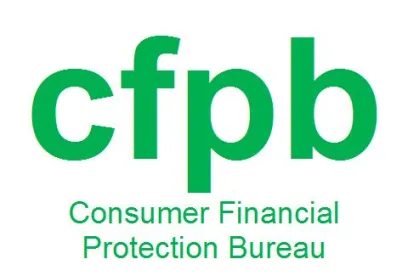It’s been over a year since the Consumer Financial Protection Bureau (CFPB) turned the real estate settlement services industry on its head by announcing in its first ever administrative appeal that Section 8(c) of the Real Estate Settlement Procedures Act (RESPA) was not, as it had long been interpreted, a series of safe harbor exemptions to the prohibitions of Section 8(a) and 8(b), but rather a mere “interpretive tool” with which to interpret the prohibitions. According to the Director, any Section 8(c)(2) compensation arrangement involving a quid pro quo settlement service business referral violates RESPA, regardless of the underlying services performed or whether the services were priced at fair market value. As has been well-documented on this blog, the CFPB’s PHH decision was rejected by a panel of judges for the DC Circuit — which described its ruling as “not a close call” — and subsequently granted en banc review. While the court subsequently granted en banc review, the CFPB’s 8(c) interpretation played second fiddle to the constitutional issues at oral argument. It is unclear whether — or how — the forthcoming en banc decision will support the panel’s eminently sensible RESPA interpretation.
In the meantime, RESPA enforcement actions (both CFPB actions and district court cases) have not overtly engaged with Section 8(c)(2) issues. This is understandable. On the one hand, the federal agency charged with enforcing RESPA has held that 8(c) is not the exemption that it has long been interpreted to be. On the other hand, a three-judge panel of the DC Circuit handily dismissed such a reading.
Recently, however, a district court in Illinois implicitly rejected the CFPB’s PHH viewpoint and instead applied the longstanding interpretation of Section 8(c)(2) in dismissing a captive reinsurance RESPA claim.
Interpretive Tool is Ignored
In Ill. ex rel. Dowling v. AAMBG Reinsurance, Inc., No. 16 C 7477, 2017 U.S. Dist. LEXIS 84231 (N.D. Ill. June 1, 2017) (“AAMBG”), a private mortgage insurance provider, Triad, was engaged in a captive reinsurance arrangement with AAMBG. Plaintiffs alleged, inter alia, that AAMBG violated Section 8 of RESPA by accepting reinsurance premiums from Triad because “the projected value of the reinsurance to Triad was far less than the premiums Defendant expected to cede.” In other words, Plaintiffs’ theory was that Triad’s reinsurance payment to AAMBG amounted to prohibited “kickbacks” that could not be construed as a bona fide payments for services that AAMBG actually performed. This, in essence, is the Bureau’s enforcement theory in PHH.
To resolve this question in AAMBG, the court necessarily was called upon to determine: 1) whether section 8(c)(2) was available as a safe harbor for AAMBG and, if so, 2) whether AAMBG qualified for the safe harbor by providing bona fide services commensurate with the premium payments it received.
With respect to the first question, the court in AAMBG did not even consider that Section 8(c)(2) should be a mere “interpretive tool.” Nor did the court reference the ongoing PHH case. Instead, the court stated in matter-of fact fashion that Plaintiffs needed to address “RESPA’s ‘safe harbor’ provision set forth in Section 8(c) as interpreted by agencies such as [the U.S. Department of Housing and Urban Development or HUD].” Id. at *12. Perhaps more illustrative of the current RESPA 8(c) landscape, Plaintiffs did not even attempt to argue that 8(c)(2) is not actually a safe harbor. Moreover, as the court noted, Plaintiffs “made [no] attempt to show that Section 8(c) does not apply to AAMBG” or that the “agreement to provide reinsurance was illusory.” Id. at *13-14.
With respect to the second question, the court—relying on HUD’s interpretive guideline for reinsurance (which the CFPB Director, in PHH, cast aside)—stated that sharing premiums would be permissible if the “payments (1) are for reinsurance services actually furnished and (2) are bona fide compensation that does not exceed the value of such services.” Id. at *13 (emphasis added). This is a straightforward—and traditional—Section 8(c)(2) analysis. While Plaintiffs had neglected to effectively address 8(c) in their briefs, the court nevertheless held that AAMBG took on substantial risk in exchange for the premiums it received based on the contract between the parties. Specifically, while Triad was liable for the first 4 percent of cumulative net losses, AAMBG—in exchange for premiums paid—was liable for the next 10 percent of all net losses (i.e., net between 4 percent and 14 percent), with any additional losses being covered by Triad. The court found that “net losses may actually be as high as 14 percent, which would require AAMBG to absorb a net loss of 10 percent and at that point would make AAMBG’s loss two-and-one-half times the loss allocated to Triad … mak[ing] AAMBG’s risk far from illusory.”[1] Id. at *14-15. In short, the payments made to AAMBG did not amount to a RESPA 8(a) violation because they qualified for safe harbor as bona fide payments for services provided—i.e. the risk assumed.
Moving Forward
The district court’s holding in AAMBG is less renegade than it is tried and true. While not explicitly addressing PHH or the CFPB, the AAMBG court sided with the same well-established 8(c)(2) interpretation articulated by the DC Circuit panel in PHH. Yet the AAMBG case is still notable, as it is one of the only RESPA Section 8(c)(2) analyses that has been evident since the PHH opinion was appealed to the DC Circuit. Since the DC Circuit panel’s ruling was vacated with the grant of en banc review, the AAMBG court could have expressed skepticism as to the applicability of 8(c)(2)–instead, however, it applied the safe harbor with vigor. Thus, industry should be encouraged that the court remained constant despite the Bureau’s fluctuation on this important issue of statutory interpretation. In framing its discussion of Section 8(c)(2) as a safe harbor, the district court’s approach is harmonious with how industry, and other courts, have long understood the statute.
What’s more, the analysis in AAMBG appears to support the vitality of 8(c)(2) in another aspect as well. Just as the DC Circuit panel indicated that the government generally bears the burden of proving that the payments at issue were more than reasonable market value and, thus, were actually disguised payments for referrals, the district court here suggested that a plaintiff must allege and prove that 8(c) does not protect the alleged illegal conduct. For example, the AAMBG court noted in favor of defendants that Plaintiffs’ amended complaint made no attempt to show that 8(c) did not apply. An affirmative obligation on plaintiff to disprove the applicability of Section 8(c)(2) makes good sense. Of course, this is all subject to the DC Circuit Court’s forthcoming en banc decision but, for now, we can enjoy this further support for RESPA Section 8(c)(2) from another federal district court.
[1] It is worth noting that the court stated that such an agreement could still be found illusory if Plaintiffs could show that “annual net losses had never, or almost never, exceeded 4 percent so that AAMBG did not make any payments (or very few payments) nor expect to under its reinsurance agreement.” Id. at *14. This reiterates that Section 8(c) is a safe harbor only when the payments are bona fide.





 />i
/>i
